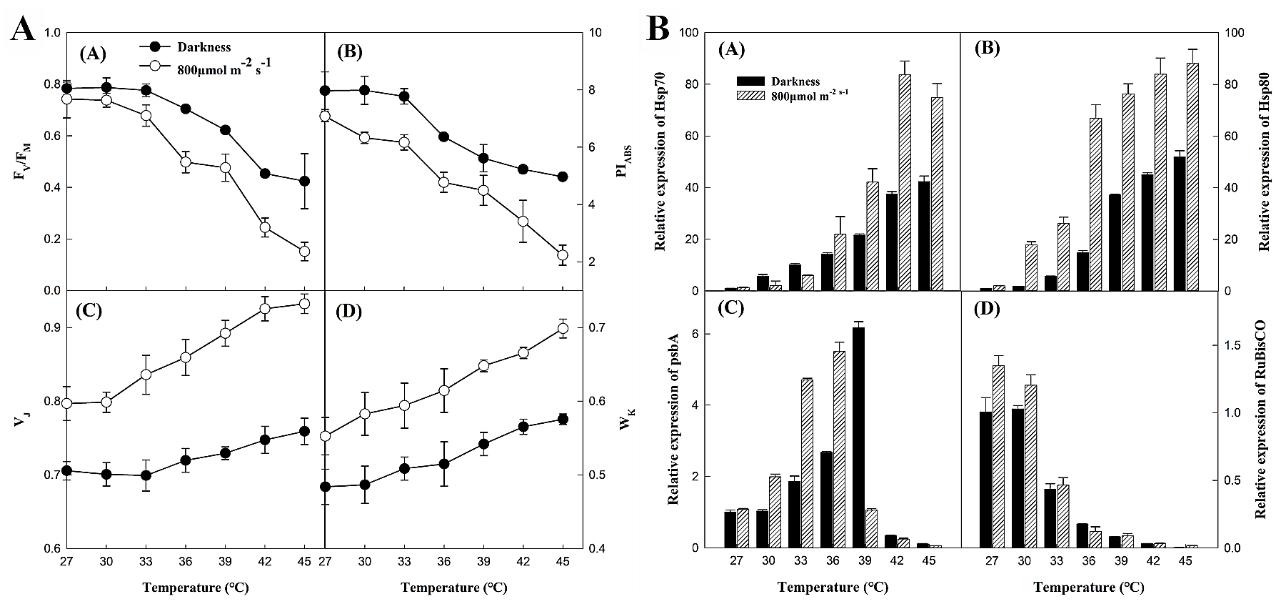Seagrass is a group of aquatic angiosperms that grows in shallow waters in the coastal sea and contributes most of the primary production while participating in many important ecological processes. In recent years, heat stress threatens the survival of seagrass, but its damage mechanisms are unclear.
Recently, the research team led by Prof. LIU Jianguo from the Institute of Oceanology of the Chinese Academy of Sciences (IOCAS) primarily explained the physiological and biochemical mechanisms underlying the decline of tropical seagrass meadows caused by heat stress combined with high light on different functional levels.
The study was published in Marine Pollution Bulletin on May. 16.
During the lowest tide, intertidal seagrass is frequently faced with the combined stress of exposure to air, direct sunlight, and high temperature, which may have a strongly negative impact on the survival of seagrass, especially in the context of global warming. Researchers found that the largest tropical seagrass Enhalus acoroides can withstand heat below 39°C in the dark. However, under high light, the tolerance to heat stress is greatly reduced. The combined effect of short-term exposure to heat and high light stress destroyed the photosystem II (PSII) and destroyed key components of the photosynthetic system in seagrass leaves. Moreover, high light combined with heat stress caused severe oxidative stress in the seagrass, which led to irreversible damage to the seagrass. These results clearly suggest that heat stress coupled with high light, may be an important cause for the decline of E. acoroides meadows.
"These findings suggest that ocean warming, especially when coupled with high light, exacerbates the decline of seagrass meadows and affects the ecological function of intertidal seagrass meadows," said Dr. ZHANG Mengjie, first author of the study.
"This serves as a warning that the effects of global warming on seagrass meadows will be even worse than expected," said Prof. LIU, corresponding author of the study.
This study was supported by the Strategic Priority Research Program of the Chinese Academy of Sciences, the National Natural Science Foundation of China, the International Partnership Program of the Chinese Academy of Sciences, the Guangxi Key R&D Program, etc.

Fig. 1 The effect of celestial motion on tides (A) and E. acoroides meadows under different exposure conditions during the low tide in Hainan, China (B-F). C: Complete submergence in water; D, E: Partially exposed to air in shallow water; F: Fully exposed to air at low tide.

Fig. 2 The effect of different temperatures on the PSII parameters and gene expressions in seagrass E. acoroides, under darkness and high light.
Mengjie Zhang, Hu Li, Litao Zhang, Jianguo Liu*. (2023). Heat stress, especially when coupled with high light, accelerates the decline of tropical seagrass (Enhalus acoroides) meadows. Marine Pollution Bulletin.
(Text by ZHANG Mengjie)
Media Contact:
ZHANG Yiyi
Institute of Oceanology
E-mail: zhangyiyi@qdio.ac.cn
(Editor: ZHANG Yiyi)

